Are Log Cabin Homes Energy Efficient? Explained
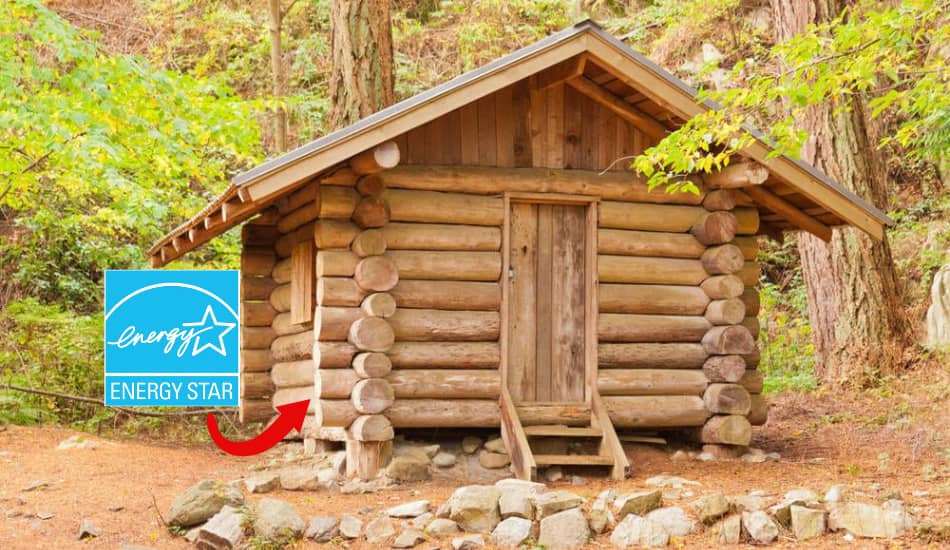
If you are one of those people who owns a log cabin, you must have wondered how energy efficient they actually are. Log cabin homes can be good at keeping energy inside because of their thick wood. Wood acts like an insulator and stops heat from getting in or out. In this article, we’ll talk about the energy efficiency of log homes and how good they are. So, let’s start!
Are Log Cabin Homes Energy Efficient? Yes, log cabin homes are energy efficient. Their thick wooden walls naturally insulate against heat and cold. As a result, they reduce energy bills and keep the cabin comfortable in various weather conditions. This is due to the high R-value that logs have, which means that it is a good insulator.
R-value tells us how well something keeps heat. Log cabins are great for all kinds of weather, making them cool in the summer and cozy in the winter. However, there are also some other things about energy efficiency that we need to go through in the rest of this article.
Table of Contents
The R-value of Wood
The way wood fights off heat or cold is measured in R-value. If you think of a solid wall made of logs, it’s doing two jobs: it’s holding up the house and keeping heat or cold out. Softwoods, like pine, have an R-value of about 1.41 for every inch (2.54 cm) thick it is, while hardwoods have around 0.71 for every inch. Now, imagine a 6-inch thick wall made of softwood logs; its R-value is a bit more than 8.
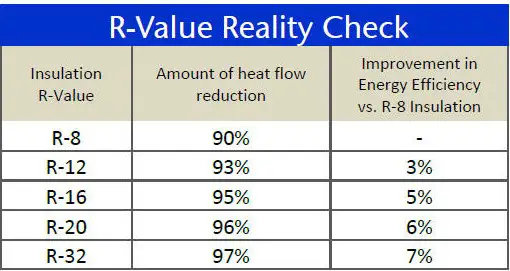
So, if we compare this to a normal wall in most homes (which is about 3½ inches thick and has an R-value of around 14), the log wall doesn’t seem as good as these logs. In fact, some building codes might say it’s not good enough. If you’re curious about the building codes where you live, you should ask the local building office or maybe the state energy department.
Where your log cabin is located also matters. In some places, logs can store heat when it’s sunny and let it out slowly when it’s dark, which is really helpful. This makes logs act a bit like “heat batteries”. This is especially true in places with a big temperature difference between day and night, like in certain parts of the world between the lines called the 15th and 40th parallels.
Related Article: Are Log Homes Warm In Winter?
Minimize Air Leakage Through the Log Cabin
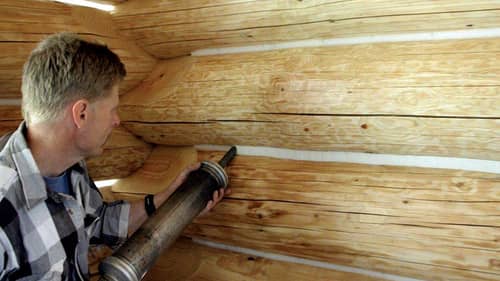
Log homes can sometimes let a bit of air inside. When a log house is first built, the logs still have some moisture in them, about 15%–20%. As time goes by, these logs dry out and get smaller. This makes small spaces between the logs, and that’s where the air can sneak in. When air comes in like this, it can make the log cabin feel drafty and change how warm or cool it is inside.
To stop air from sneaking in, logs should be dried in a safe place for at least half a year before building the house. If you want to pick the best woods to keep air out, here’s a list starting with the best choice:
Most people who build with logs know they can shrink and let in air. So, they dry the logs in a special oven before using them. They also suggest putting in plastic strips and special sealants to close any gaps. It’s important to check these seals often and fix them if needed.
Related Article: Can Bear Break Into A Log Cabin? Explained
Controlling Moisture Inside the Log Cabin
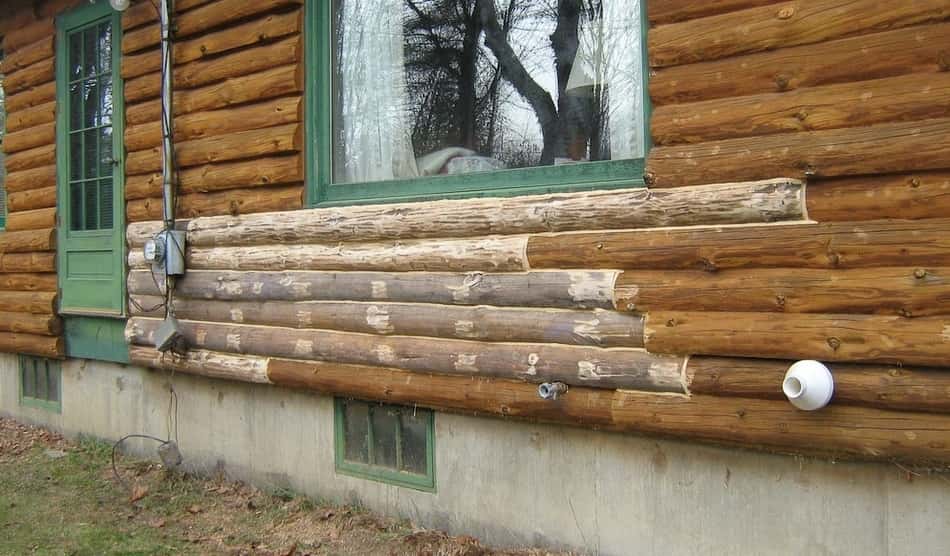
Trees absorb a lot of water while they grow. Even after turning them into logs for houses, they can still absorb water quickly. This means log cabin homes can get wet quickly, which can lead to the wood going bad or insects moving in.
It’s really important to keep the logs away from water. A good way to do this is to use logs that have been treated to keep water out and to stop insects. This treatment should be done every few years. It’s also a good idea to have big roofs that stick out, big gutters, and ways for water to flow away from the house to keep everything dry.
Related Article: How Log Cabins Were Built In the 1800’s?
Low-Energy Wall Structures
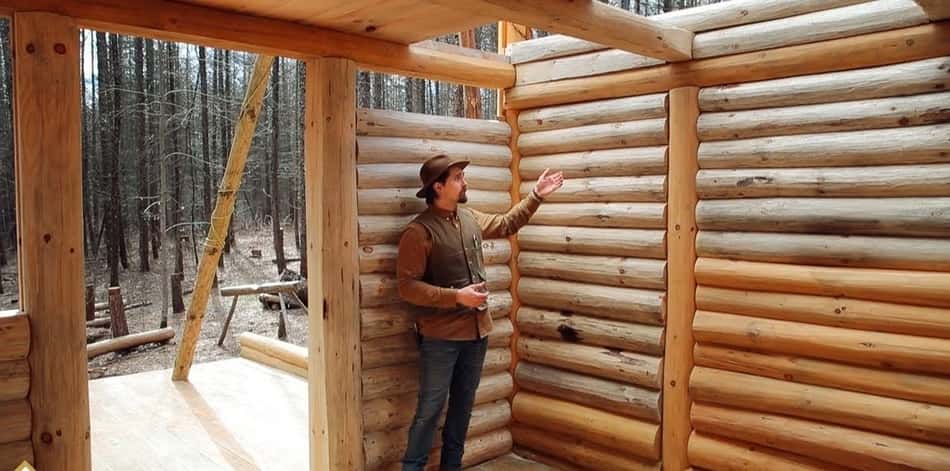
The way a log wall keeps heat inside is a bit different than other types of walls. Even though it might not be as insulating as some, there’s more to keeping a home warm than just how insulating a wall is. It also matters how well the wall stops air from getting in and out and how it can keep heat and give it back later.
Many log cabin homes use walls made only of solid wood, with no extra stuff to keep heat in. Even in super cold places like Northern Finland or Russia, a thick log wall can keep the inside warm just by itself.
These walls make the log homes use very little energy; they’re some of the best at doing this. You can put this extra insulating stuff on either side of the main log wall. Using insulating materials made from wood, like wood fibre or tiny wood pieces, is a good idea, so the walls can still “breathe” naturally.
Great Airtightness Means Lower Energy Bills
A big reason why some companies that build log cabin homes save energy is because of how tight the walls and structure are. Tight walls mean that less air will pass through and that heat loss will be lower. At the same time, the house feels comfier because there’s no chilly draft. This means you can even turn down the heat a little inside.
What does this mean for you? You’ll pay less on your energy bills. These companies tested many of their houses to see how tight they are and found that they’re really good, usually getting great scores for saving energy. These scores usually put the houses in the best energy-saving groups, A or B.
For those who want to learn more, watch this YouTube video where they talk about energy-efficient log cabins:
Related Article: How To Remove Mold From Log Cabins?
FAQ: People Also Ask
What Are the Disadvantages of a Log Cabin?
Log cabins can be cool, but they have some downsides. First, they need a lot of care and attention. Second, bugs might like them a bit too much. Also, if you decide to build one, it could cost around 30% more than making a normal house.
Is a log cabin a good insulator?
Log cabins might look cozy, but they might not be the best at keeping your house warm or cool. When you compare them to normal wood walls or other similar options, log cabins aren’t as good at keeping heat in. In fact, most building rules don’t think log walls are good enough for this job.
What is the R-value of an 8-inch log?
An 8-inch log can hold heat about as well as a wall made from small pieces of wood (2x4s) with some fluffy insulation inside. This log’s “keep-warm” score is 9.2. To understand better, it’s like a wall filled with 3½ inches of fluffy stuff, and the wood pieces are 4 inches apart.
Final Thoughts
Log cabin homes have a unique charm and can offer natural insulation, but their energy efficiency often depends on the thickness and treatment of the logs. While they can naturally regulate temperature to some extent, they might not match the energy standards of more conventionally insulated homes. Pairing log cabins with modern heating systems and regular maintenance is key to optimizing their efficiency.
Many people in colder places use systems like ground heat pumps, air heat pumps, or ones that use water. More folks are using solar panels these days since they’re cheaper now. And having a fireplace that uses wood or small wood pieces is always a nice and warm choice. I hope that this article has helped you, and if you have any additional questions, feel free to comment below.

